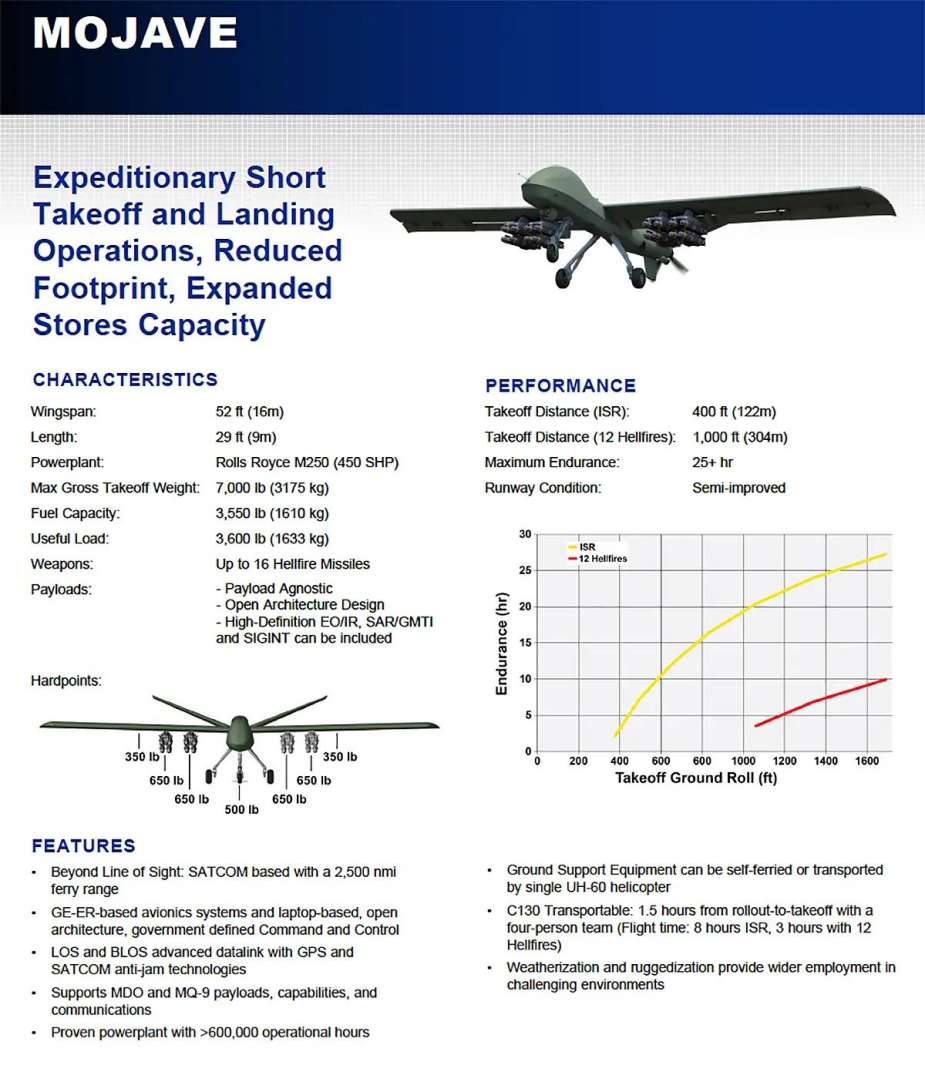Breaking news
GA-ASI Mojave UAV demonstrator tested from British aircraft carrier HMS Prince of Wales.
A new unmanned aerial vehicle (UAV) developed in the U.S. recently achieved a landmark by landing and taking off from the HMS Prince of Wales, a Royal Navy Queen Elizabeth–class aircraft carrier. During trials off the East Coast, the ship tested the General Atomics' Mojave, a short take-off and landing (STOL) demonstrator. The HMS Prince of Wales had earlier hosted a smaller British-made drone for logistics testing. This development is detailed in a report by Aaron-Matthew Lariosa in USNI News.
Follow Navy Recognition on Google News at this link
 Mojave UAS is taken back into the hangar after a successful trial on HMS Prince of Wales (Picture source: Royal Navy)
Mojave UAS is taken back into the hangar after a successful trial on HMS Prince of Wales (Picture source: Royal Navy)
Rear Admiral James Parkin, the Royal Navy Director Develop, hailed this successful trial as a transformative moment in maritime aviation. He emphasized that integrating unmanned and crewed assets significantly advances the Royal Navy's carrier strike group capabilities.
The Mojave, akin to the MQ-9 Reaper and Grey Eagle from the Predator series, is designed for short-runway landings on challenging terrains like aircraft carriers and semi-improved fields, without the need for arresting gear. Its notable features include a larger wingspan and the ability to carry over twice the payload of its predecessors, enhancing its sensor and payload deployment capacity. General Atomics has touted the Mojave for its impressive firepower, capable of carrying up to 16 Hellfire missiles.
The trial of the Mojave is part of a series of tests scheduled for the HMS Prince of Wales’ autumn deployment. The carrier's flight deck has accommodated various U.S. Marine Corps and Coast Guard aircraft, including the F-35B Lightning II, MV-22 Osprey, and others, since its arrival on the U.S. East Coast in September.
Vice Admiral Martin Connell, the Royal Navy’s Second Sea Lord, expressed excitement over the international interest in the Mojave trials. He highlighted the significance of these tests in enhancing the aircraft carrier's capabilities well into the 21st century.
A Japanese delegation has also been closely observing these trials, particularly the F-35B tests, to prepare for the deployment of their carrier, JS Izumo, to the East Coast for similar aviation trials next year.
Meanwhile, the U.S. Navy is advancing its development of the MQ-25A Stingray, a fixed-wing unmanned aircraft for carrier operations. Despite manufacturing delays, this refueling drone is expected to achieve initial operating capability by 2026.



























